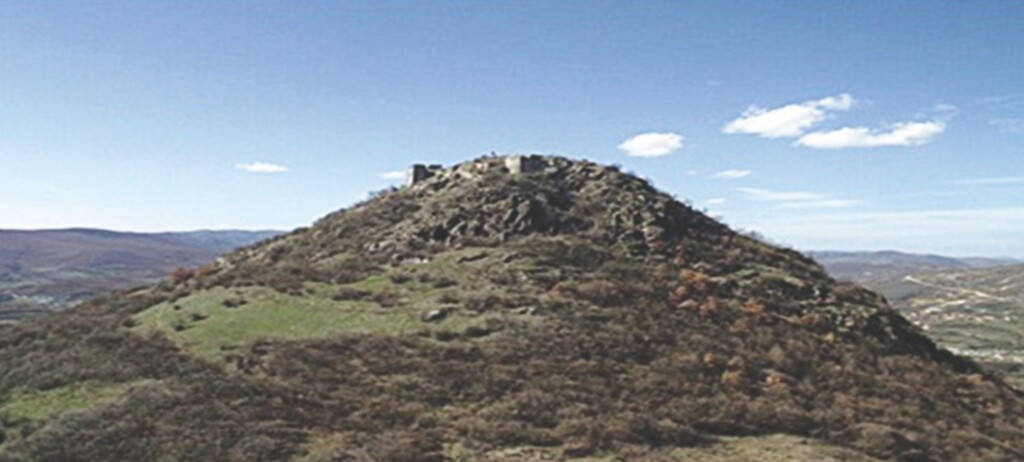Historiography of Zvečan
Zvečan is an important and characteristic Serbian medieval town, where many historical events from early Serbian history took place, and it had a palace and a church. The geographer Petar Matković mentions that the town was built by King Milutin's mother-in-law, the Byzantine Empress Irene, Simonida's mother. Others suppose that the town is Serbian. Certainly, the town is very ancient and perhaps more Serbian than Byzantine, although judging by the construction technique of certain buildings in it (the church and some other rooms of unknown purpose), it can be concluded that it is Byzantine.
The location of the town is such that we must consider it accurate that there was some kind of fortress here in prehistoric times, and perhaps the Romans had some stronghold here, but nothing more definitive can be said about all this, at least until more extensive archaeological investigations are carried out. The town itself was always on the border of our medieval states. It is first mentioned in the early Middle Ages when the young Serbian state began to fight for its independence from Byzantium. This was in the second half of the 11th century, during the time when Vukan, Bodin's župan, ruled these regions. Therefore, as early as 1091, Zvečan is mentioned as a border town of Raška, while Lipljan was the seat of Byzantine authority. Only in the struggle of župan Nemanja against Greek authority does Zvečan appears again.
Nemanja at that time strove with all his might to gather all Serbian territories into one strong state, which was not to the liking of the Greek ruler Emperor Manuel Komnenos. Therefore, he sends a large army against Nemanja, which encamps near Pantina. Nemanja descends from Zvečan with his army and suddenly attacks the Greek army, which he disastrously defeats near Pantina in 1170. On this occasion, Tihomir, Nemanja's brother, who fought on the side of the Byzantines, also perished. This is the most significant victory of the Serbian army at that time, related to Zvečan, although Nemanja had to submit to Byzantium until Manuel was in power. But this victory contributed so much that he ruled almost independently in his own lands.

Everything that happened in Zvečan afterwards is not glorious, but rather more tragic. One hundred and fifty years later, here in Zvečan, another new struggle ended between Constantine and Stefan, the sons of Milutin. The former fought with his blinded brother Stefan, later 'Dečanski,' for power. Stefan attempted to make peace between them, but Constantine refused and died in battle, although according to another version he ended his life by execution in Zvečan in 1322, where he is presumed to be buried.
The bloody history continues. Stefan Dečanski had aged, and his young son Dušan wanted to take power from his father, who opposed this. Therefore, Dušan suddenly attacks him in his palace in Petrič, in Nerodimlje, and captures him there. From there he brings him to Zvečan as a prisoner. This happened in 1330. By 1331, Dečanski dies in Zvečan, and perhaps he was even strangled there, to prevent reconciliation between father and son, which did not suit the then nobles.
After these events, Zvečan never again played such an important role as before. It is known that in 1337, the lord of Zvečan was the younger son of the lady Danica, who built the church in the village of Ljuboten in Skopska Crna Gora. In 1363, the lord of Zvečan was čelnik Musa, husband of Draginja, Lazar's sister, and by 1390 the town was in Turkish hands. Then the Turkish kefaliya Feriz is mentioned. From then on, it was in Turkish hands until the Balkan Wars, when it again, after so many years, belonged to the Serbian state.
In the territory of today's municipality of Zvečan, which is one of the smaller municipalities of the Republic of Serbia in terms of area, there are three extremely important Serbian cultural monuments: the ancient fortified town of Zvečan (first written mention 1093/94, whose lord at that time was the Raška župan Vukan), the monastery of St. Stefan in Banjska (built between 1312 and 1318 on the foundations of an earlier church, endowment and mausoleum of King Milutin, where Queen Teodora, the mother of King and later the first Serbian Emperor Dušan the Mighty, is buried), and the Sokolica Monastery (14th century).

The Sokolica Monastery, as a Serbian spiritual cornerstone of Zvečan and its district, alongside the Banjska Monastery and the ancient town of Zvečan, has historically remained a strong spiritual, national, and cultural identifier. Especially during the time of Turkish slavery, the Sokolica Monastery represented a true hope for the salvation of the Serbian people.

In addition to the mentioned monasteries (Banjska and Sokolica), the Devin Vode Monastery, as well as the beautiful temples in the villages of Banov Do, Koriće, Žitkovac, Žerovnica, and the St. George Church in the center, make up the spiritual strength of this region.

Before 1999, the municipality had a population of 9,229, of which 74% were Serbs, and the other ethnicity was Albanians, who mainly lived in the town of Zvečan. Just before the NATO action in 1999, the population was estimated at 12,500, of which 95% were Serbs. According to the same data, at that time, there were only 4 Albanian households in the town of Zvečan. Today, most Albanians live in the Albanian villages of Boljetin, Lipa, and Žaža. Now the municipality has 16,600 inhabitants, 98% of whom are of Serbian ethnic structure.
The settlements in the municipality of Zvečan are:
- Banjska
- Baњski Suvи Do
- Banov Do
- Banjska Reka
- Boljetin
- Bresnica
- Valach
- Veliko Rudare
- Vilište
- Grabovac
- Gržane
- Doljane
- Baњa
- Žaža
- Žerovnica
- Žitkovac
- Zvečan
- Izvor
- Jankov Potok
- Joševik
- Kamenica
- Koriљe
- Kula
- Lipa
- Lipovac
- Lokva
- Lovac
- Lozishte
- Mali Zvečan
- Malo Rudare
- Matica
- Meki Do
- Oraovica
- Prkač
- Rudine
- Sendo
- Srbovac
The development of this area for centuries has been linked to mining, and the entire economy, like the entire Mitrovica region, was long based on industry. A good portion of the working population was employed in Trepča. However, it now represents a routine, for the revival of which huge financial resources are needed. Today, the participation of the working population has significantly decreased and shifted to service activities. Agriculture, which was almost completely stagnant due to developed industry and high standards, reaching its minimum during the 90s, is gradually reviving in villages.
In the municipality, there are three primary schools, one secondary school, one College of Applied Technical Studies, and since 2001, the Faculty of Arts of the University of Priština.
